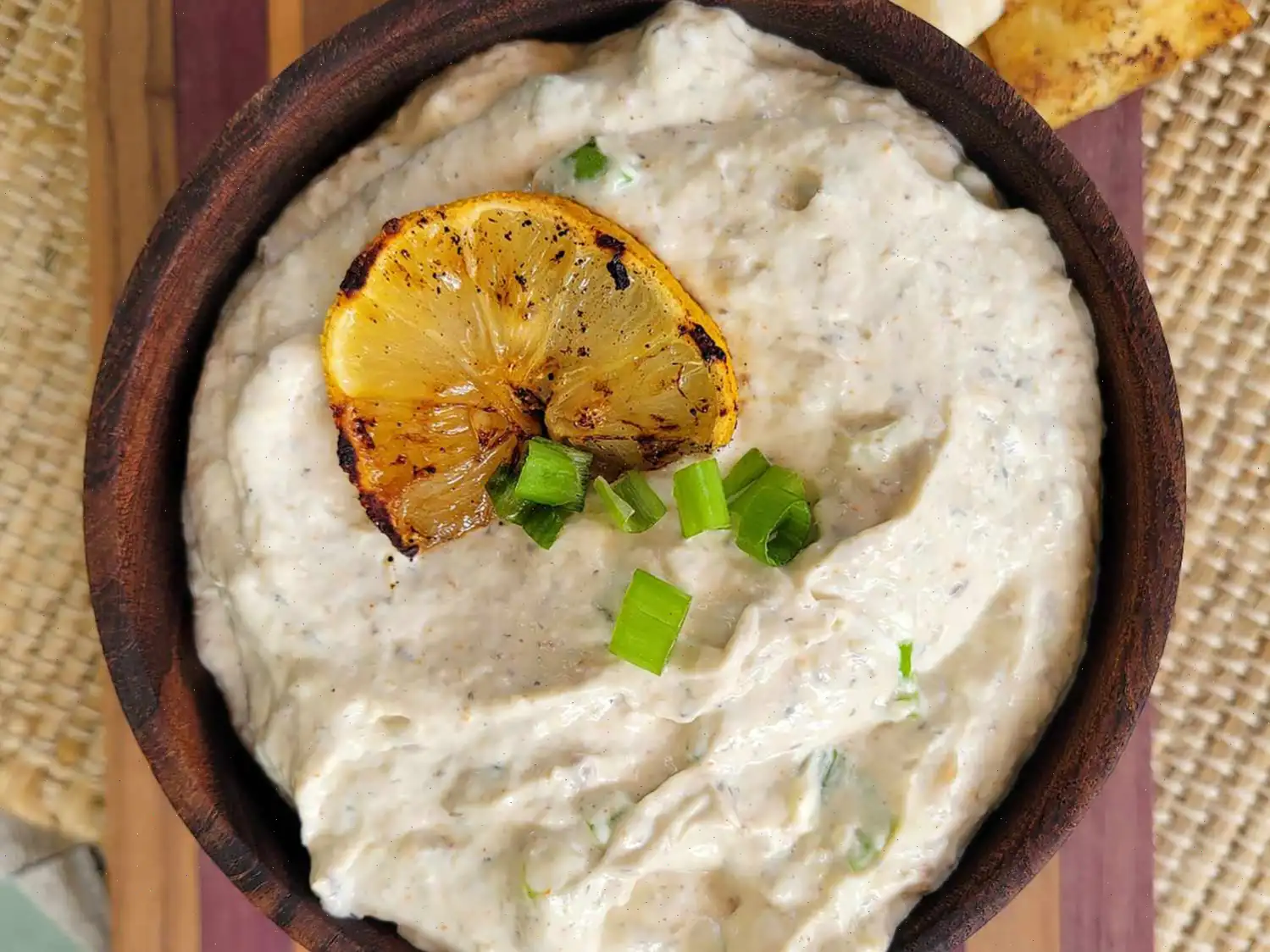
Sardine Dip Recipe
Ingredients
This recipe was developed at its original yield. Ingredient amounts are automatically adjusted, but cooking times and steps remain unchanged. Note that not all recipes scale perfectly.
Original recipe (1X) yields 6 servings
- 2 cans sardines in oil
- 1 (8 ounce) package cream cheese, softened
- 1/4 cup real mayonnaise
- 3 green onions, chopped, green and white parts
- 1 tablespoon spicy brown mustard
- 1 teaspoon fish sauce
- 1 tablespoon seafood seasoning, such as Old Bay Original
Directions
To prepare this flavorful dish, follow these simple steps:
- In a large mixing bowl, combine the sardines (with oil), cream cheese, mayonnaise, green onions, mustard, fish sauce, and seafood seasoning.
- Mix everything thoroughly by hand or use an electric mixer for a smoother consistency.
- Once all ingredients are well combined, your dish is ready to serve!
Nutrition Facts (per serving)
| Nutrition Fact | Amount | % Daily Value |
|---|---|---|
| Calories | 264 | |
| Total Fat | 24g | 30% |
| Saturated Fat | 9g | 46% |
| Cholesterol | 86mg | 29% |
| Sodium | 686mg | 30% |
| Total Carbohydrate | 3g | 1% |
| Dietary Fiber | 0g | 1% |
| Total Sugars | 2g | |
| Protein | 10g | 21% |
| Vitamin C | 1mg | 2% |
| Calcium | 167mg | 13% |
| Iron | 1mg | 7% |
| Potassium | 207mg | 4% |
* Percent Daily Values are based on a 2,000 calorie diet. Your daily values may be higher or lower depending on your calorie needs.
** Nutrient information is not available for all ingredients. Amount is based on available nutrient data.
If you are following a medically restrictive diet, please consult your doctor or registered dietitian before preparing this recipe for personal consumption.
The History of Sardine Dip
Sardine dip has roots that trace back to simple, resourceful cooking traditions, particularly in coastal communities where sardines were abundant. Originally, it emerged as a way to preserve fish and make it more palatable by combining it with creamy or tangy ingredients. Over time, it became a popular appetizer in North America and Europe, especially in the mid-20th century, when canned sardines became widely available in supermarkets. Its ease of preparation and long shelf-life made it a favorite for family gatherings and informal parties.
Regional Variations and Characteristics
While sardine dip is popular in American cuisine, regional variations exist. In the Southern United States, for instance, recipes often include spicy mustard or hot sauce to complement the rich flavor of the sardines. Mediterranean versions might incorporate olive oil, garlic, and fresh herbs like parsley or dill. In Asia, particularly in Southeast Asian countries, fish sauce is sometimes added for a deeper umami taste, giving the dip a distinct savory profile. Each region adapts the basic recipe to highlight local flavors and ingredients.
What Makes It Different from Similar Dishes
Sardine dip stands apart from other seafood spreads, such as tuna or salmon dips, due to its strong, distinctive flavor and oily texture. Unlike milder fish dips, sardines provide a bold, slightly briny taste that pairs exceptionally well with creamy bases like cream cheese or mayonnaise. The addition of seasonings such as Old Bay, mustard, or green onions creates layers of flavor that differentiate it from simpler spreads. Its compact nutrition profile, including omega-3 fatty acids, also sets it apart as a wholesome option.
Typical Serving Contexts
Sardine dip is most commonly served as an appetizer or a party snack. It pairs well with crackers, toasted bread, fresh vegetables, or even as a filling for sandwiches and wraps. Bars, casual restaurants, and home gatherings often feature sardine dip as a quick, crowd-pleasing starter. Due to its intense flavor, it is typically enjoyed in small portions, making it ideal for tasting plates or charcuterie boards.
Interesting Facts About Sardine Dip
- Sardines are one of the few fish that are eaten whole, including bones, which makes sardine dip rich in calcium.
- Despite its strong flavor, sardine dip has a surprisingly long history in modern American cuisine, dating back to the post-World War II era when canned fish became widely accessible.
- The dish is highly versatile: it can be served cold as a dip or incorporated into baked dishes for a warm appetizer.
- Adding a dash of fish sauce or Worcestershire sauce enhances the umami without overwhelming the natural taste of the sardines.
- Health-conscious food enthusiasts appreciate sardine dip for its protein content and omega-3 fatty acids, which support heart and brain health.








